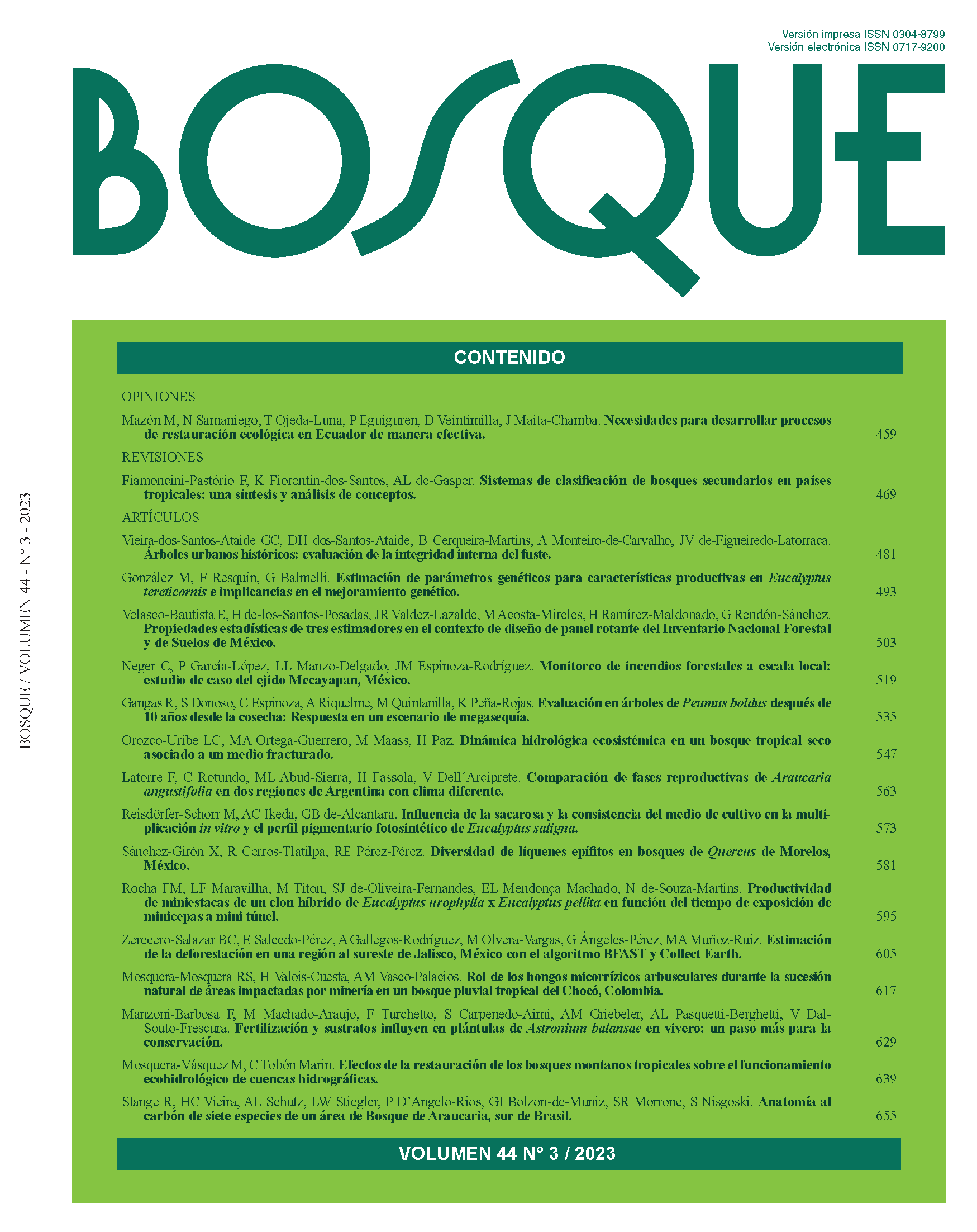Evaluation in Peumus boldus trees after 10 years since the harvest: Response in a megadrought scenario
Main Article Content
Abstract
Peumus boldus (boldo) is an important tree in the mediterranean forests of central Chile. Its leaves are valued for their essential oils and alkaloids. Historically, and in various sectors, the harvest of boldo leaves has exceeded natural production. Additionally, the megadrought that has affected these forests since 2010 is seen as a threat. Therefore, it is necessary to determine sustainable harvest levels for the management of natural boldo stands. The objective of the study was to evaluate the recovery of boldo trees harvested in 2011 in the Metropolitan Region of Chile. The study was carried out in trees that had experienced partial harvest, total harvest, and no harvest. Pre-dawn and noon water potential, chlorophyll fluorescence, and growth were evaluated. After 8 years there were still differences between the treatments, where higher harvest intensity implied better water condition of the trees. Between 2011 and 2021, partially and fully harvested trees recovered an average of 10.7 % and 24.2 % of their initial biomass, respectively. The trees without harvest had an average loss of 0.9 % compared to the initial biomass recorded in 2011. The reduction of above-ground biomass has accelerated since 2019. In the megadrought scenario, it is expected that growth of boldo trees will be lower than that reported so far. Due to climatic conditions in central Chile, it is necessary to review the harvesting methods and periodicity currently used for boldo.

